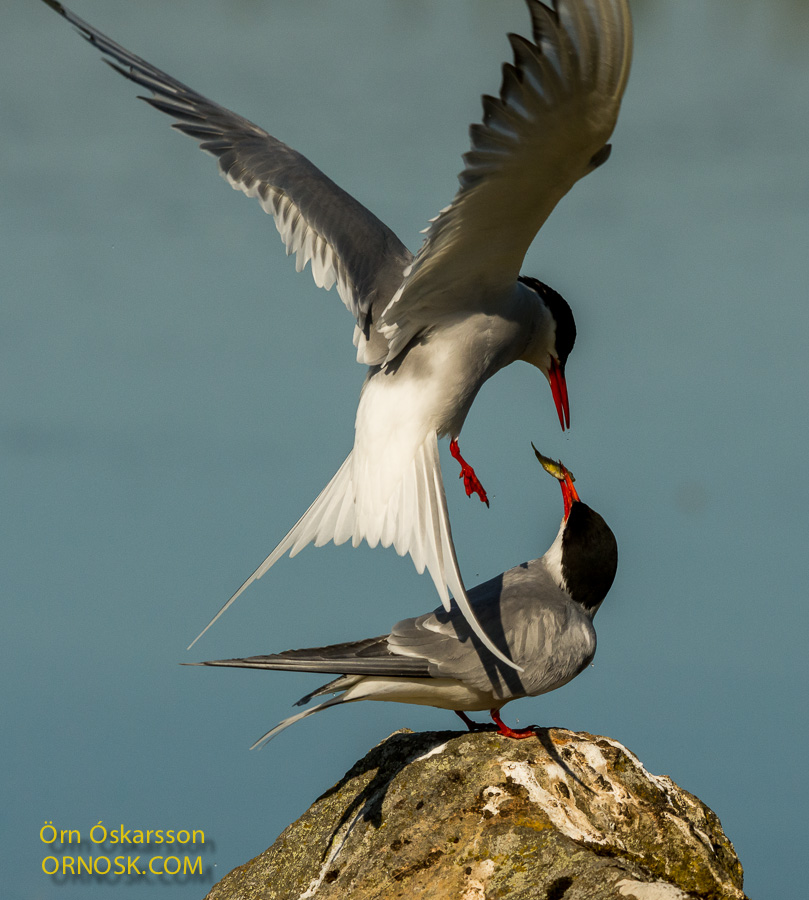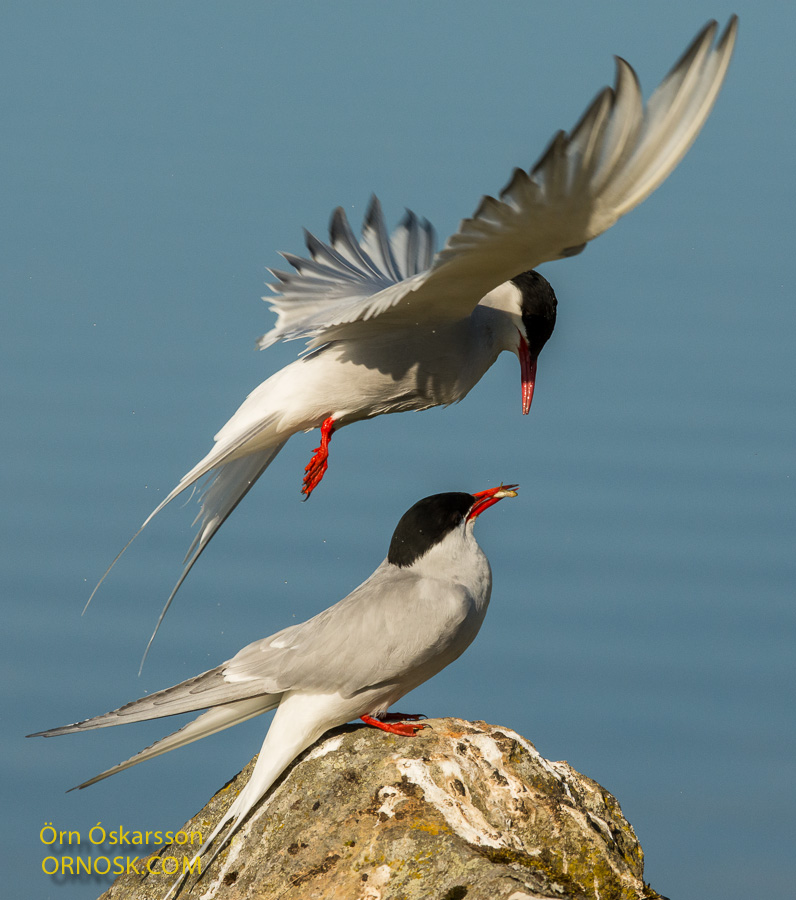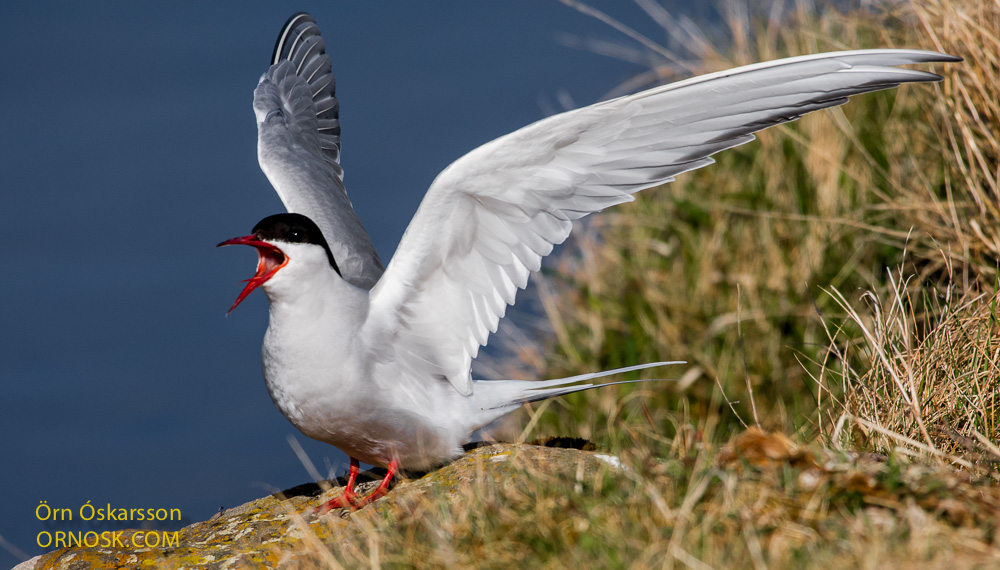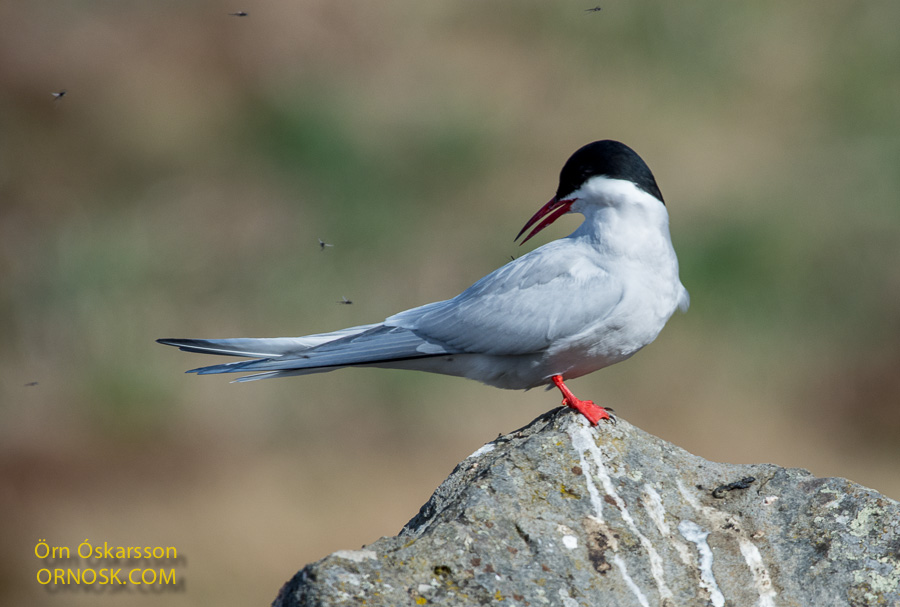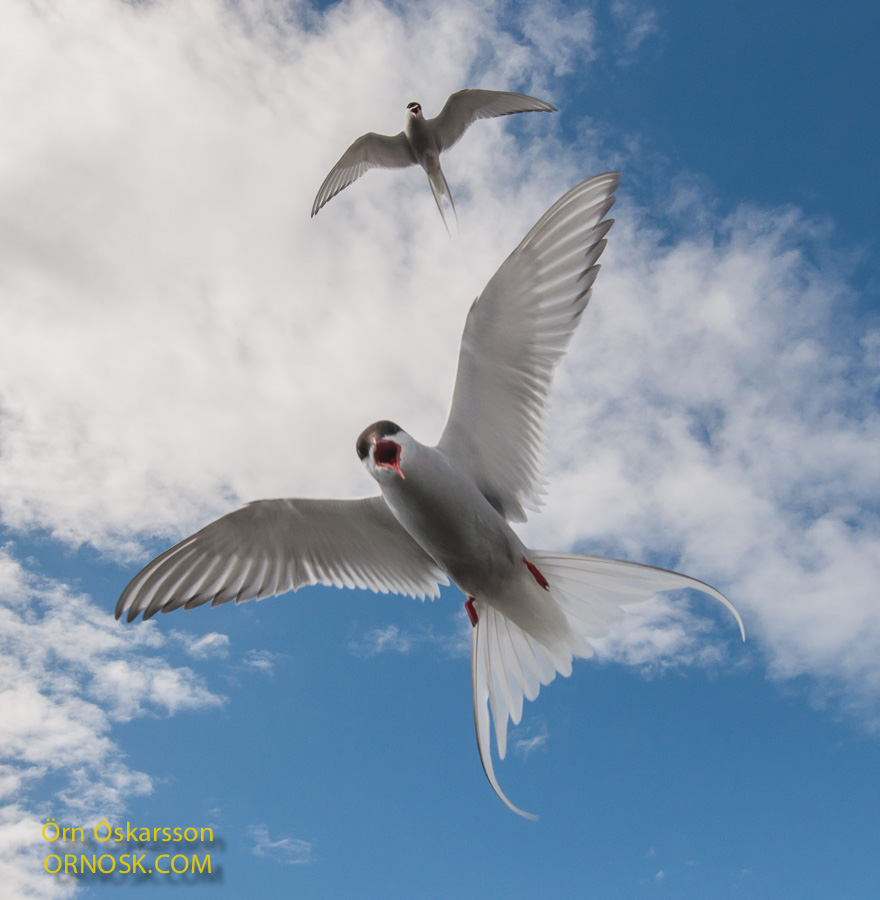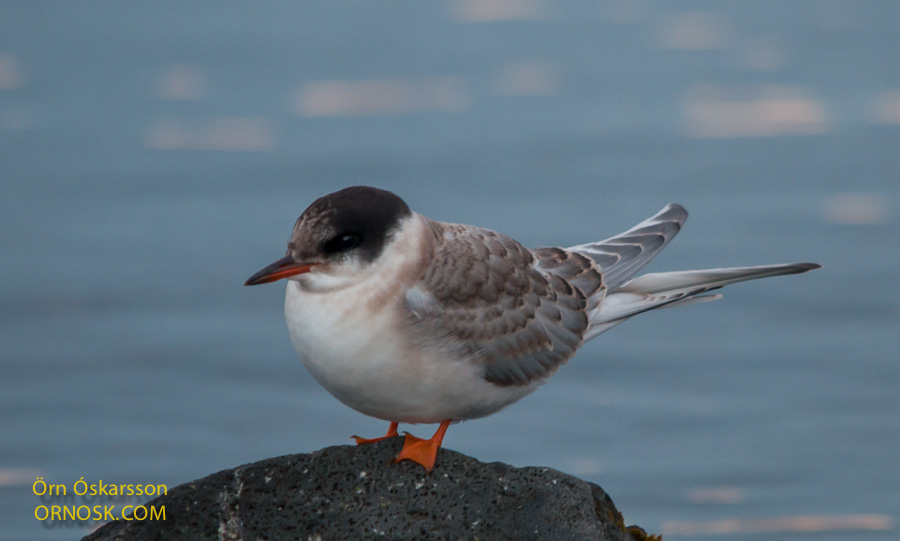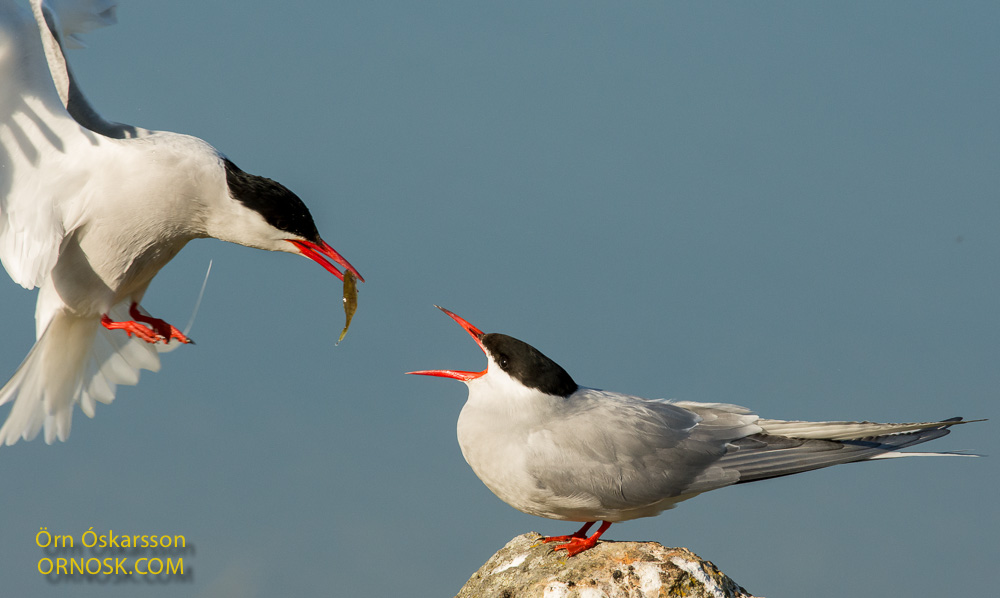
The Arctic Tern’s favourite nesting places are near the sea or lakes where they are sure to get some small fish, sticklebacks or fingerlings. During the breeding time the males start feeding the females.
To lay healthy eggs the female needs more food and the male seems to know this. The female squeaks loudly and waits for food, keeping the males very busy. It is an interesting sight to see.

